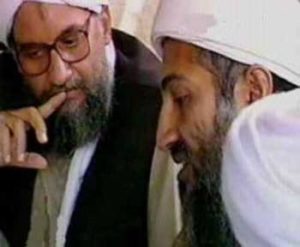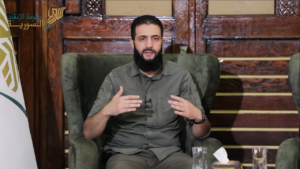Yesterday, the Shabaab Movement announced the establishment of the “Islamic Governorate of Shabelle” (wilayat shabila al-islamiyya) in the region of Lower Shabelle in southern Somalia. The Shabaab says that it was “necessary for the brothers to establish civil administrations for carrying out the matters of the Islamic state (al-dawla al-islamiyya)” after they liberated Lower Shabelle from criminal tribal groups that were extorting its inhabitants. The new governorate has a governor and supervisors for missionizing and education, security and morality policing, courts, and the treasury.
Apparently, this is the not the first governorate that the Shabaab has established. Today, its “Islamic Governorate of Juba” announced that it has ordered the destruction of local saints’ shrines, at once burnishing the institution’s Salafi bona fides and undermining the local tribal Sufism that permeates Somalia.
Two things strike me about the Shabelle announcement. First is the terminology used to describe the new entity. As I noted a few weeks ago, this is a touchy issue among Jihadis because it is unclear what new Jihadi governments should call themselves after the Islamic State of Iraq used the term dawla to describe itself, suggesting the Islamic superstate (dawla), or caliphate, of old. Notice that the Shabaab entity is neither an emirate (imara) as claimed by the Taliban in Afghanistan nor a state (dawla) as claimed by the Islamic State of Iraq. It is something in between, a governorate (wilaya). Under the early caliphate, governorates were semi-autonomous but owed allegience to the caliph. Later, the term was more vague and now usually has the meaning of “province.” Judging from the Shabaab declaration that it is setting up the wilaya to carry out the matters of the Islamic state (al-dawla al-islamiyya), the group seems to have the older meaning in mind, thus putting it in a subordinate but semi-autonomous relationship with the ISI. What is unclear is whether the Shabaab will set up an intervening “emirate” of Somalia to stand between the superstate (dawla) and the governorates (wilayat), as the Islamic Emirate of Caucasus has done.
Second, everything about this statement reeks of Abu Bakr Naji. I try not to cite Naji too much because he is just one strategist among many and every student of Jihadism puts their guy forward as THE guy. Still, this is the first time I have seen a statement that so clearly evokes Naji’s concept of rudimentary “administrations” (idarat) being set up to provide basic services to people after Jihadis have rid an area of criminals. The idea, says Naji, is that the people will be so grateful to you for ridding them of scoundrels that they will accept your rule. After the “administration” is functioning, it can then begin to network with other administrations, which will all eventually become noncontiguous statelets or nodes in the web of the caliphate.
Document (Arabic): 12-8-08-faloja-announcement-of-wilaya-in-somalia
Document (Arabic): 12-8-08-faloja-somalia-wilaya-announcement-that-it-will-destroy-graves





4 Responses